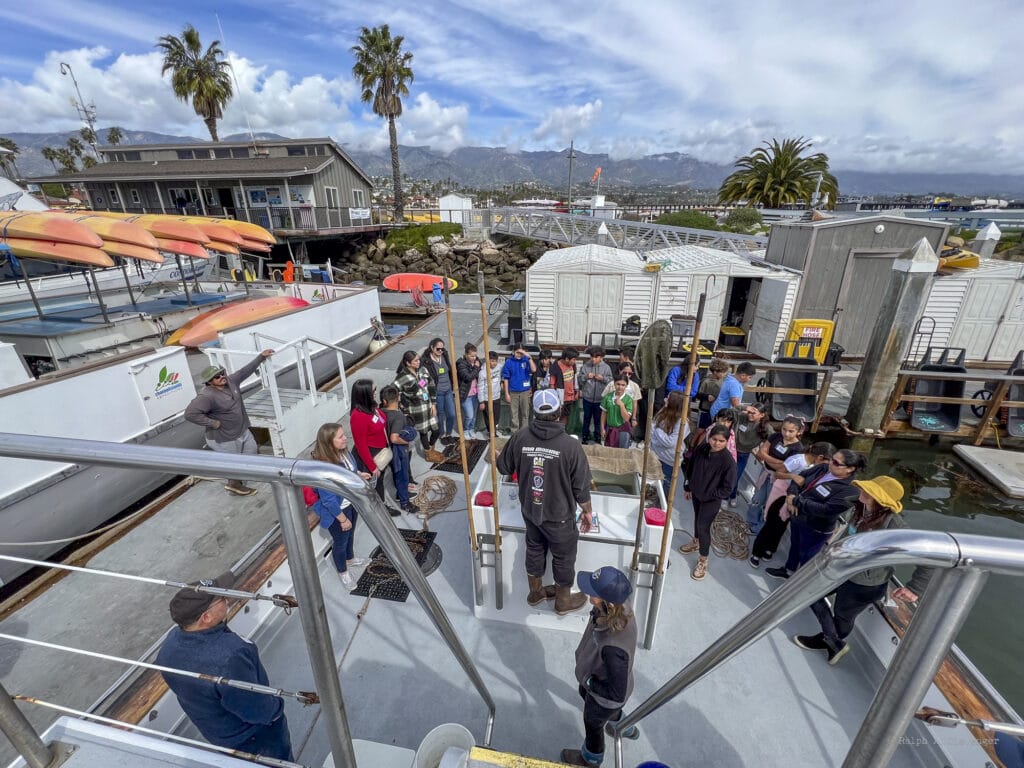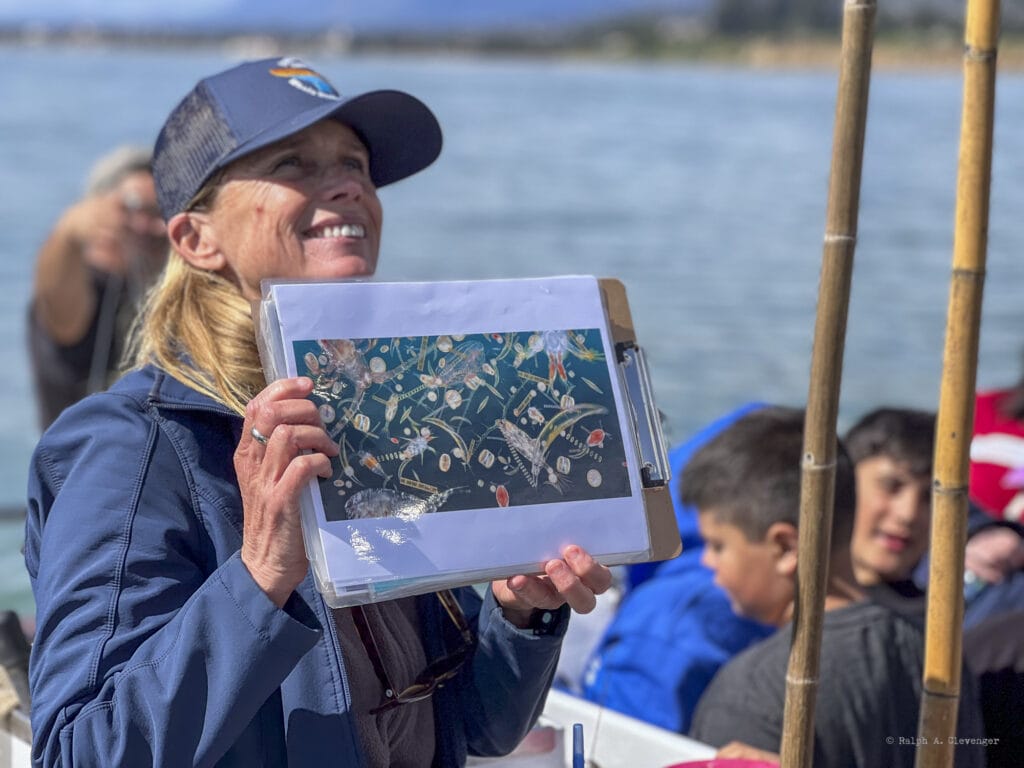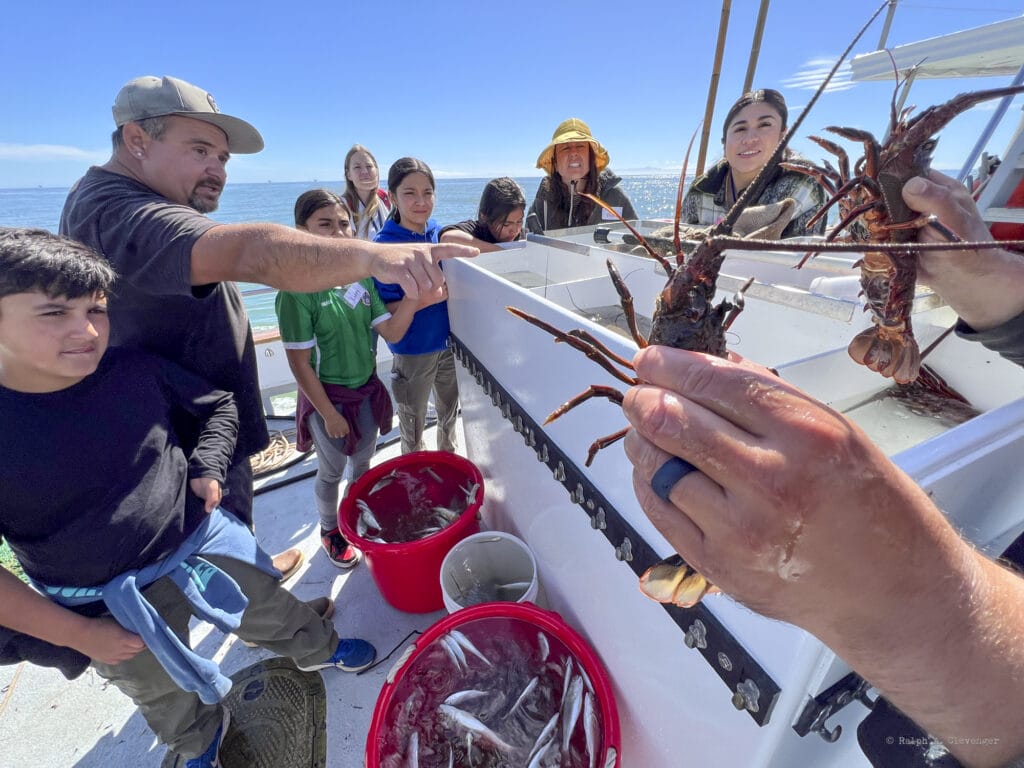Students Embark on a Journey of Scientific Discovery Through Santa Barbara Maritime Museum’s Marine Science Program
By Maclaine Fiori

As the morning sun peeked through the clouds, a group of 26 fifth-graders and their chaperones gathered outside the Santa Barbara Landing. On this day, the students embarked on an extraordinary journey as participants in SBMM’s Marine Science Program. This group is part of more than 400 students from many schools in the county (from Santa Maria to Carpinteria) participating in the Marine Science program in the month of February.
After a warm welcome by SBMM’s Education Programs Lead, Jason Statucki, the students got a rundown of the morning activities as well as an introduction to the world of boating. “What’s the left side of the boat called?” Statucki excitedly called out to the kids. “Portside!” they called back in unison, showing off the knowledge they had prepared in the classroom beforehand.
Boarding the vessel Stardust, the class met the crew and the marine experts who would be their guides for the journey. With Captain Sal at the helm, and his two crew members Larry and Johnny B at his side, the crew provided the students with information about the boat and safety precautions to be aware of while at sea.

While on the boat, Holly Lohuis, lead marine biologist and educator; Penny Owens, director of education at Santa Barbara Channelkeeper; and Spencer Frey, a marine educator, led the group through floating labs, which include topics such as plankton discovery and marine-life education. “Alright fifth graders! Are you guys ready to be oceanographers for the day?” Holly asked the group. “Yes!” they bellowed back at her. The excitement was palpable as the two-hour floating lab dove into the mysteries of the ocean with its newest citizen scientists. The first stop? Visiting a sea lion perched on a buoy as the boat exited the harbor. The first marine mammal sighting of the day!
Once at the anchoring point, the students divided into small groups, immersing themselves in the four rotating labs curated by the experts. Penny was the tour guide for the microscopic realm of plankton. The fifth graders witnessed the teeny, tiny world of a water droplet teeming with life through the lens of a microscope, learning that even the smallest organisms play a vital role in sustaining marine biodiversity. “Santa Barbara Channelkeeper is thrilled to be working with SBMM and the incredible efforts being made in educating kids about the environment and the health of our oceans,” said Penny.
Larry and Johnny B. led the marine life station. Giving students a first hand experience to discover the vibrant array of animals that are in the channel. “Allowing students the chance to encounter different creatures makes us feel like kids again,” said Larry. “We get just as excited as they do! It’s wonderful to watch them light up as they learn and explore the ocean life we get to work with everyday.”
Spencer explored the exciting world of the ROV (remote operating vehicle), explaining to each team the intricacies of every part of the machine while also highlighting the capabilities and importance an ROV brings to a scientific team’s research.
The last and final rotation was with Holly. She taught the importance of measuring some of the physical properties of ocean water using a Secchi disc and Van Dorn bottle. Through gauging sunlight penetration and collecting water samples from varying depths, the students grasped the vital role that comprehending these physical properties plays in our understanding of marine life, ranging from plankton to whales.

Photo Credit: Ralph Clevenger.
At the end of the day, one student exclaimed “I want to do this every day!” SBMM’s Marine Science program opens the eyes of Santa Barbara’s youth to the beauty of the channel while providing them with the tools and knowledge to explore further scientific discovery. Ultimately, the program aims to provide students with the tools and access they need to begin nurturing their relationship with the coastal environment and empowering them as ocean stewards. Instill an understanding and love of the ocean in these youth, so that they will become stewards of this important resource, and possibly even pursue marine science or other ocean-related careers in the future.
